Our drive took us even higher. As we entered into alpine tundra, we stopped at Monkey Creek (don't ask me, there aren't any monkeys in New Zealand) for a fun photoshoot.
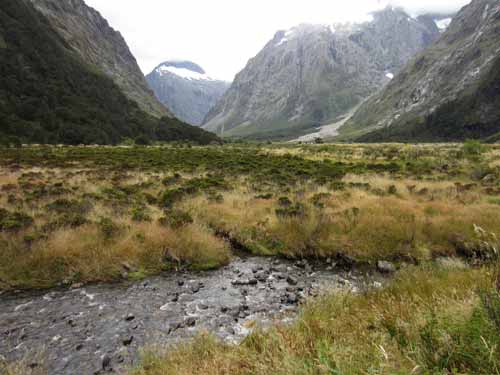
Monkey Creek
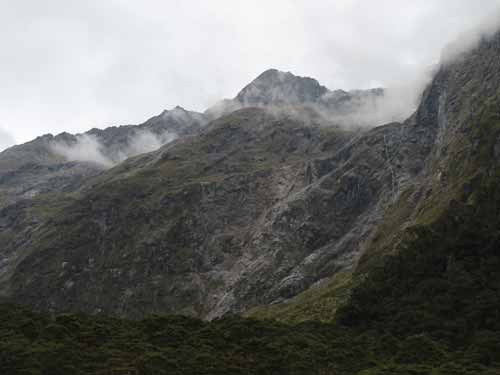
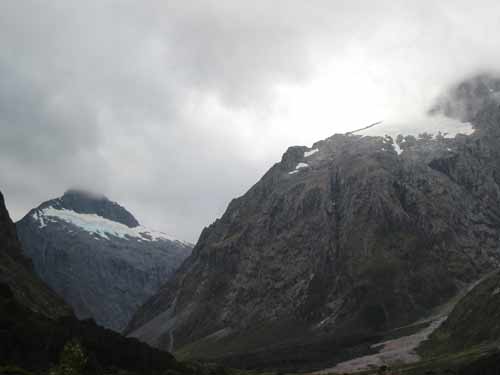
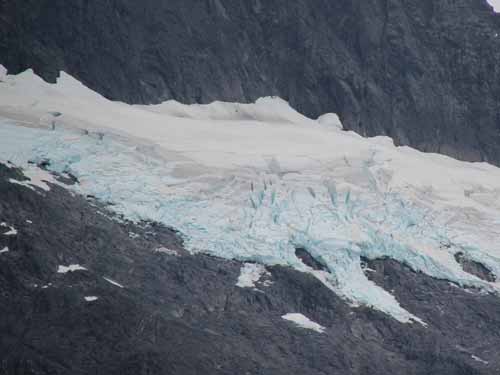
Ooooh... glacier?!
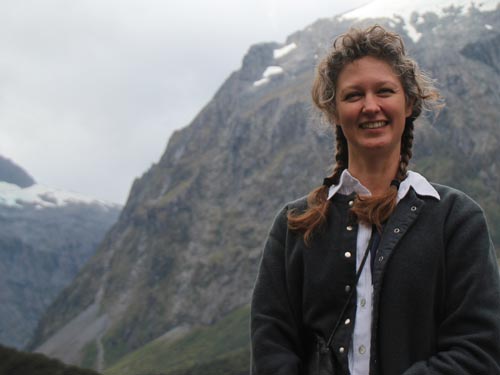
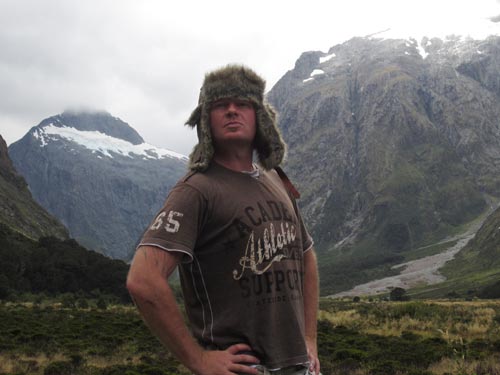
Have fuzzy hat, will conquor!
We pulled over just before Homer Tunnel. There were several cars parked, some waiting at the stop light to enter the tunnel and others by the side of the road... covered with keas. These feisty animals were frantically ripping at every piece of plastic they could find on the cars... and the tourists just watched with amusement. Fortunately we had parked across the street and down the road a bit, so they weren't interested in ours. I believe kea damage is one of the biggest claims with New Zealand rental car companies.
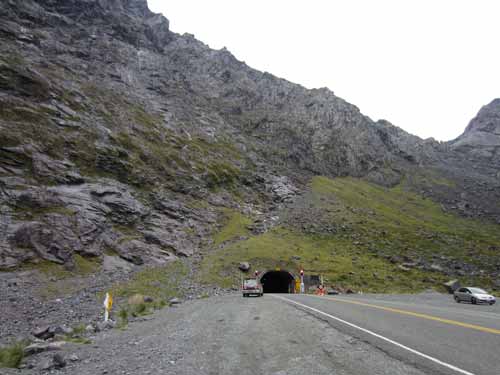
Approaching the Homer Tunnel
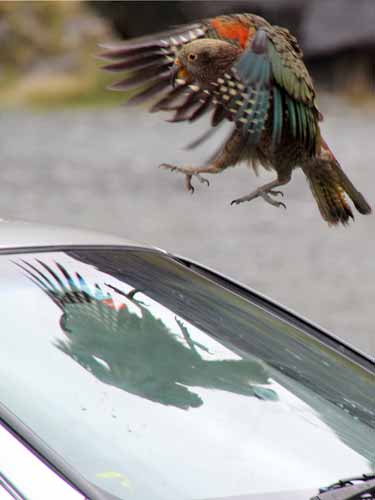
As soon as a new car would drive, the keas would flock to it.
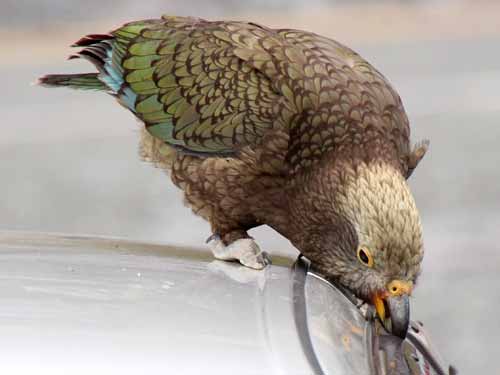
Ripping and pulling and destroying
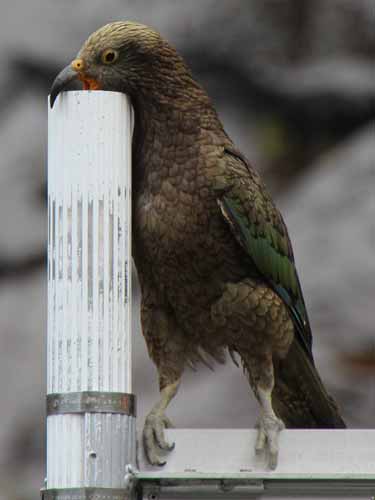
Nothing was sacred, not even the sign posts.
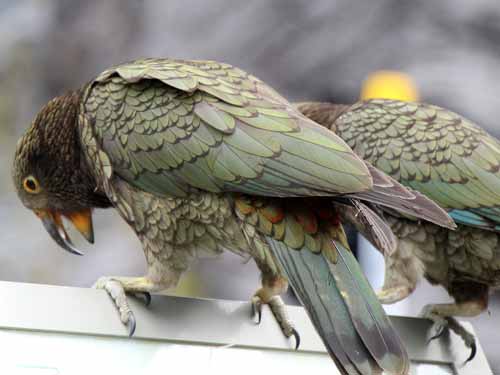
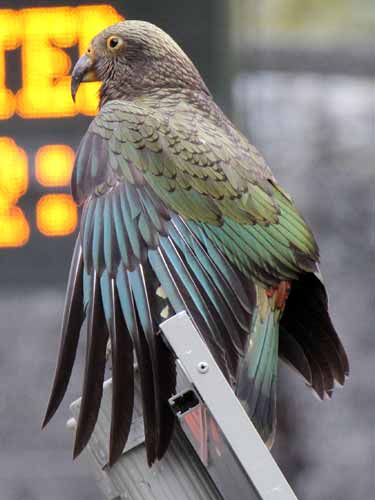

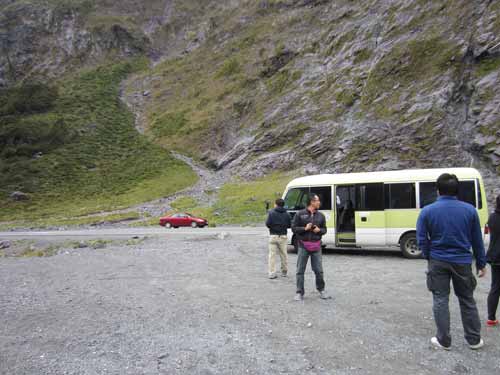
Our little red car seemed to be safe across the way.

Looking down the valley

Waterfalls covered the steep cliffs.
The Homer Tunnel is an incredible achievement. The 1.5 kilometer tunnel was first proposed in 1889. Before that, visitors to Milford Sound had to travel by boat along the coast or on foot along the walking track. The motivation was tourism, but it the Depression of the 1930's that provided the means. So, in the winter of 1935, eight men with pick axes, shovels and wheelbarrows began clearing away rock debris at the base of Homer Saddle. By summer they had finally reached solid rock. Machinery and hundreds of men were then brought in. After avalanches killed three people, a safety tunnel was built.... until an avalanched crushed it in 1945 (fortunately there were no casualties)! The tunnel was started in 1940 but wasn't completed until 1953 (because of a break during WWII).
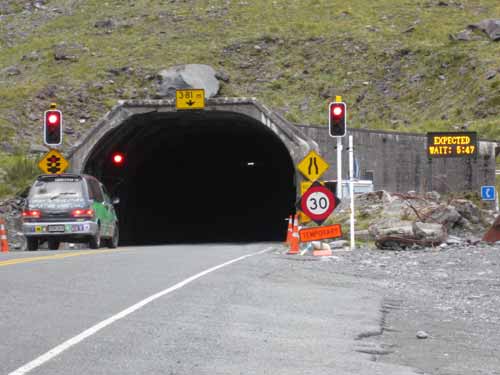
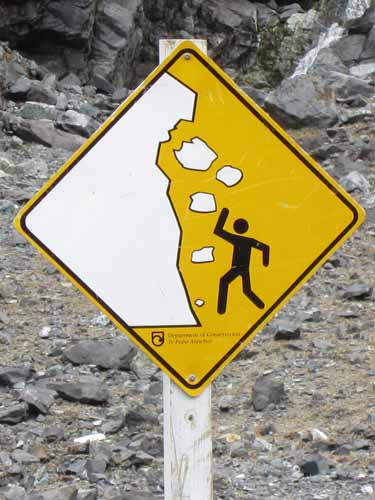
Yup, that's what happened to the poor workers.
Driving through the tunnel was quite scary actually! It was fairly narrow and had a very steep downward slope to it. The lighting was minimal and the pavement was wet. We were quite glad when we emerged on the other side, past a long line of cars waiting to go the other direction. The car was glad too because it was starting to smell like it was overheating although the gauges showed that it was ok. Going down, however, we were then subjected to its squealing brakes, so we tried to go as easy on it as we could.
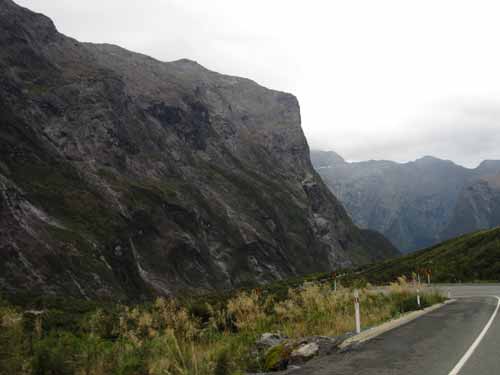
Safely on the other side
We drove a bit further and made another touristy stop at... The Chasm (it almost needs its own ominous sound effect here!). Surrounded by towering peaks, we made our way along a densely forested path. The calls of keas rang though the trees. We arrived at a bridged which spanned a turbulent little river. It was lining the cliffs of this river that the potholes were.
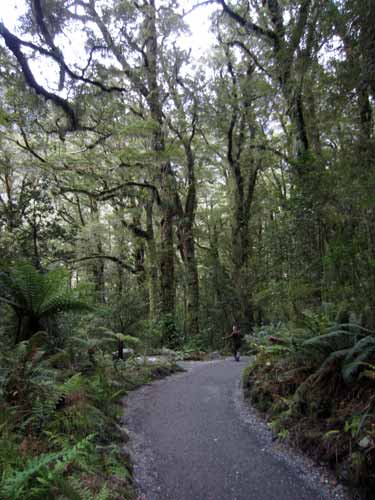
Note the man on the path for scale
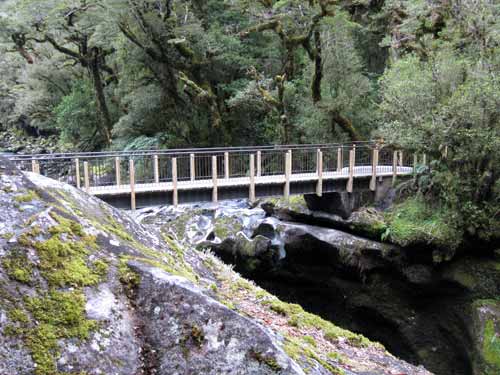
Truly a bridge over troubled waters

The swirling waters had carved out these creative shapes.
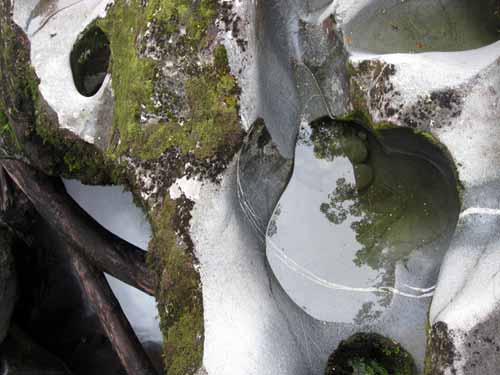
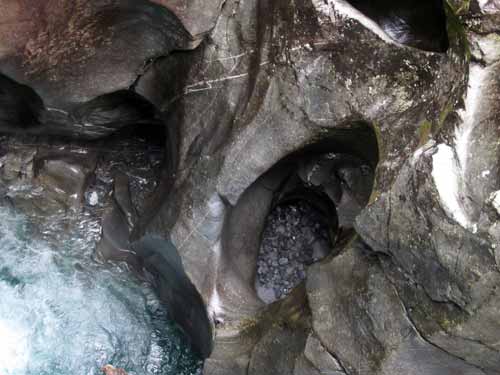
It wasn't too much longer before we arrived at our accommodations, the Milford Sound Lodge. We had a room on the end, quite far away from the bathroom facilities, but at least it was a covered walk.

The Milford Sound Lodge
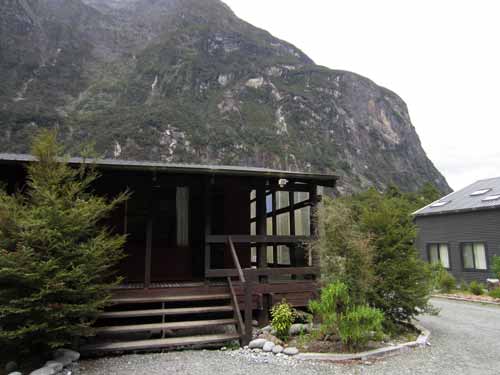
Our room on the end


Does this also include windshield wipers?
We drove down to the actual sound a few minutes away. We first walked down to the dock to talk to someone about booking a boat ride for tomorrow. The girl was obviously very unhappy at her job. When I asked about weather (so we could decide if we wanted to go tomorrow or Monday), she said there was no way she could predict it. Uh... how about checking a weather forecast online perhaps? No, not possible. We would just have to take the risk. At some point after a few more of my unrelenting questions, she pointed to a small piece of paper at the far other end of the counter, saying that that was the only weather forecast they had. Um... you couldn't have said that at the very beginning of the whole ordeal? So we walked over to read what it said.... possible showers both days. We were at least able to get out of her that there was still lots of room on the boat so we could wait until tomorrow morning to decide.
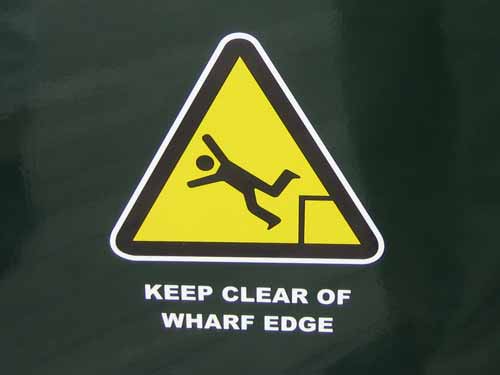
A long walk off a short pier?
We then walked up to the tourist office to find out about walking the Milford Track, but it was closed. So we took a stroll called the Milford Foreshore Walk, along the edge of the Cleddau River delta, reading the numerous information signs along the way.
First, the history of Milford Sound (or Piopiotahi in Maori)... To begin with, it isn't a sound, it's a fjord. The difference is that the former is sculpted by a river and the latter is carved out by a glacier and then flooded by the sea. But the folks back then didn't know. They also misspelled it fiord instead of fjord, and so it remains today mostly because it would simply be too expensive to reprint all the brochures and maps.
20,000 years ago, this spot was covered by a river of ice up to 6,500 feet (2,000 meters) deep. The glacier started in the high mountains and flowed westwards, ending at the sea. Around 14,000 years ago, it came to a halt and began its slow retreat. But it left a huge mound of debris at the mouth of the fiord, limiting the movement of marine organisms (and water) in and out. But while the mouth is relatively shallow water, the fiord's deepest spot is around 980 feet (300 meters) deep. The last glacial advance into the sound occurred some 11,000 yeas ago.
The area was first visited by the Maori over 1000 years ago. They were in search of pounamu (or greenstone). They carried the stone out via much the same route that is now the Milford Track. The area was also rich with food and natural resources.
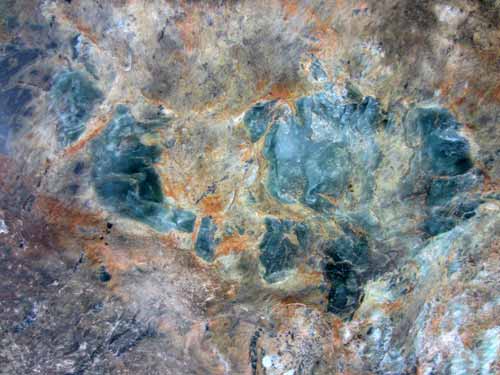
Greenstone
Captain Cook was the first European to record sailing past here in the 1700's. But the entrance to the sound is so small that he didn't think much of it (looking at it from 4 miles off the coast). In 1812, it was discovered again by Captain John Grono who named it Milford Haven after his homeland in Wales. That name was later changed to Milford Sound. It still remained fairly isolated until the 1880's, when the walking path of Milford Track was created. About 60 years later, the Homer Tunnel would provide road access.
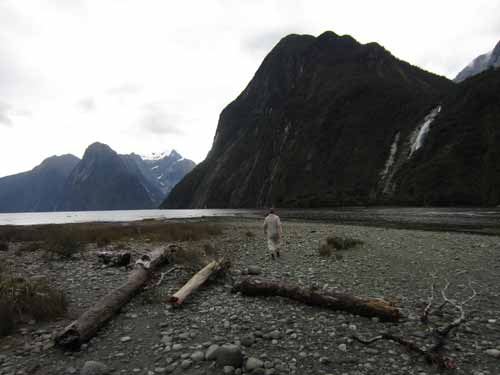
Walking as far as we can go with the tide out
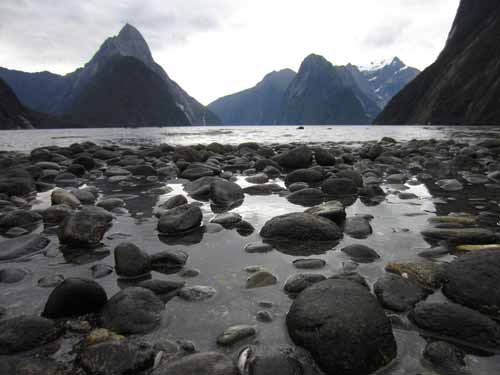

Click for a larger version of the names of the various peaks
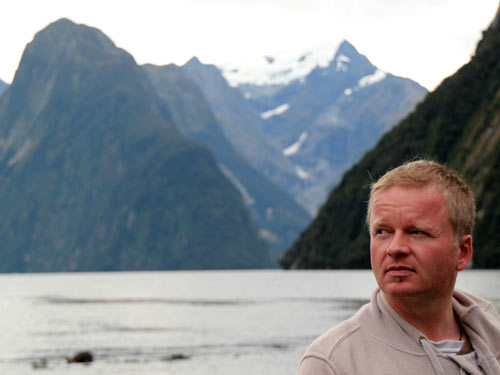
This time, Regan is the serious one...

... and I'm not!
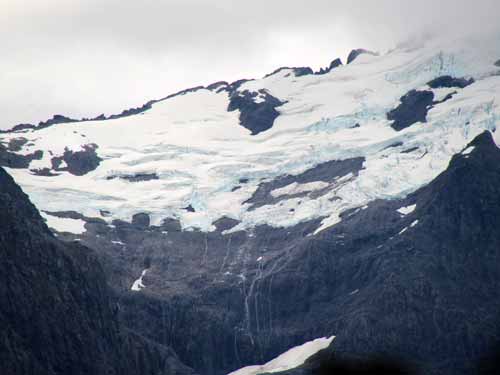
The melting glacier on Mt. Pembroke
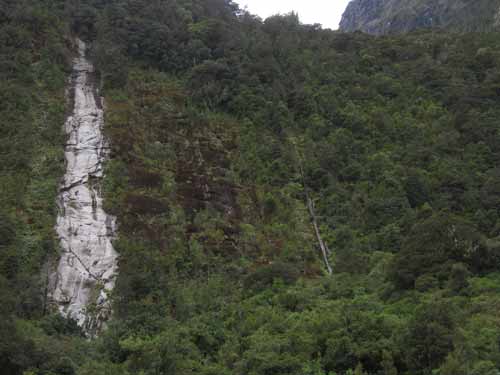
In theory, Milford Sound is one of the wettest places on earth, with an average annual rainfall of around 264 inches (6,700 mm), most of which falls in the spring.They have been having a drought here too and many of the waterfalls have stopped running.
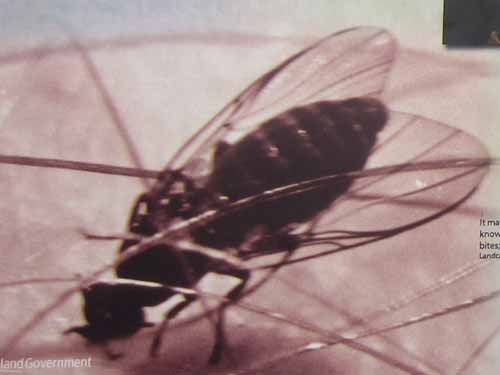
An info sign on the sandfly or the blackfly (or Te Namu). Apparently only the females bite (like mosquitos and humans). The males suck plant sap since they don't need the protein to produce eggs.
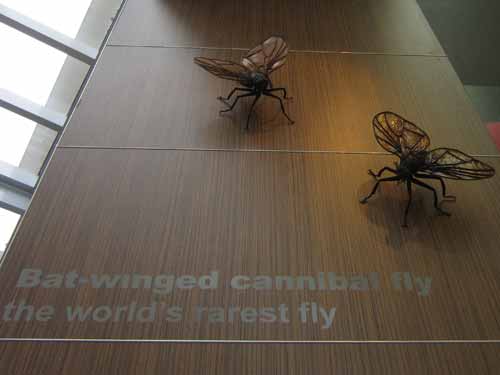
The Bat-winged Cannibal Fly has large black wings and hunts along streams in search of its prey, sucking moisture from the bodies of other insects caught on the wing. Ew! I hope that's not its real size!
It was still light we we decided to do the short Milford Lookout Track as well. It was rather short but VERY steep. In spite of the clouds, we got a nice overview of the area.
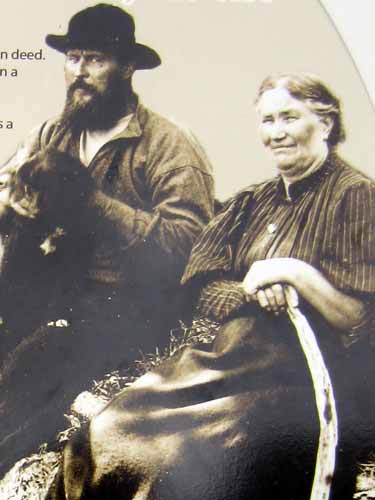
Donald Sutherland was one of the original European explorers of the area in the late 1800's. In 1890, he married a widow from Dunedin named Elizabeth Samuel, and they set up a popular tourist industry here.
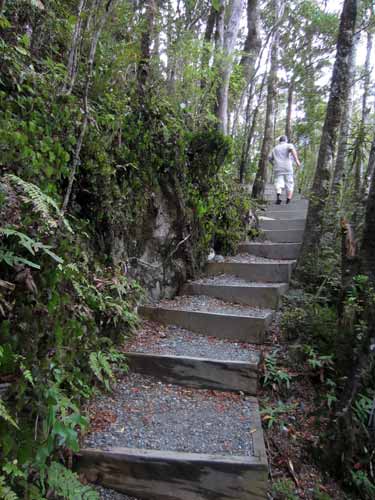
A steep ascent
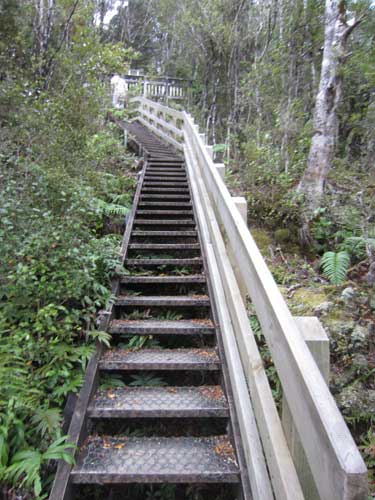
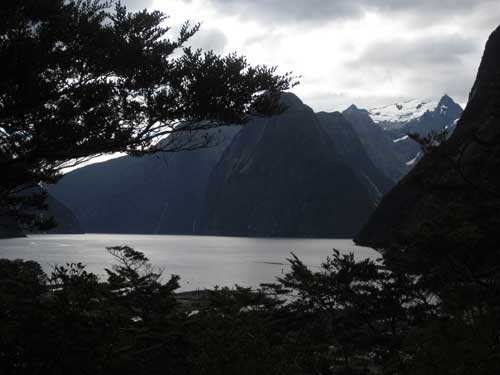

Shelf mushroom
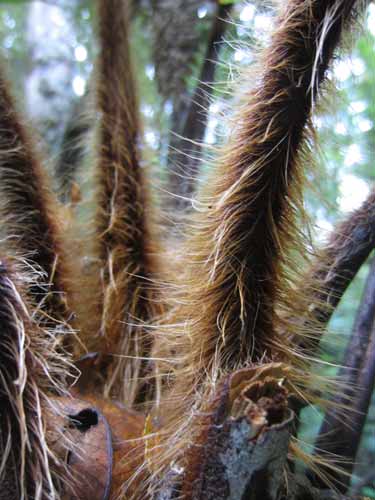
Fuzzy tree fern
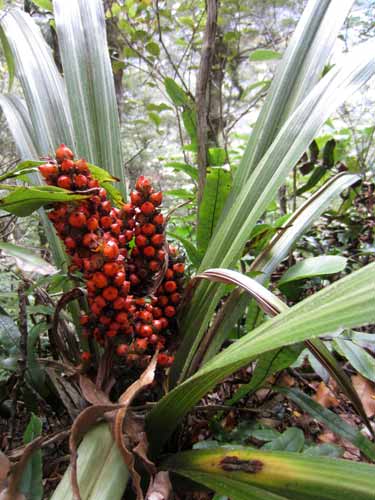
Back at the bottom of the hill was the couple's grave. When Donald died in 1919, Elizabeth couldn't move him, so he remained unburied for five weeks until help arrived.

We returned to the lodge and had a nice meal of assorted things from our shopping spree. When it was dark enough, we ventured out to the nearby trail boasting of glow worms! We set out with my tiny weak flashlight and walked the short trail once in the dusk so that we would know what to expect. It took us along a very dry river. We started to lose faith. When we reached a section where clearly a waterfall had once run but that now didn't have a trickle in it, we basically lost all hope. But even then, we waited until it was dark enough that SHOULD a glow worm happen to be there, that we should see it. But no, nothing, not a single glow anywhere.

return • continue